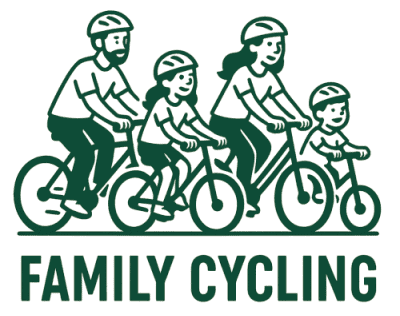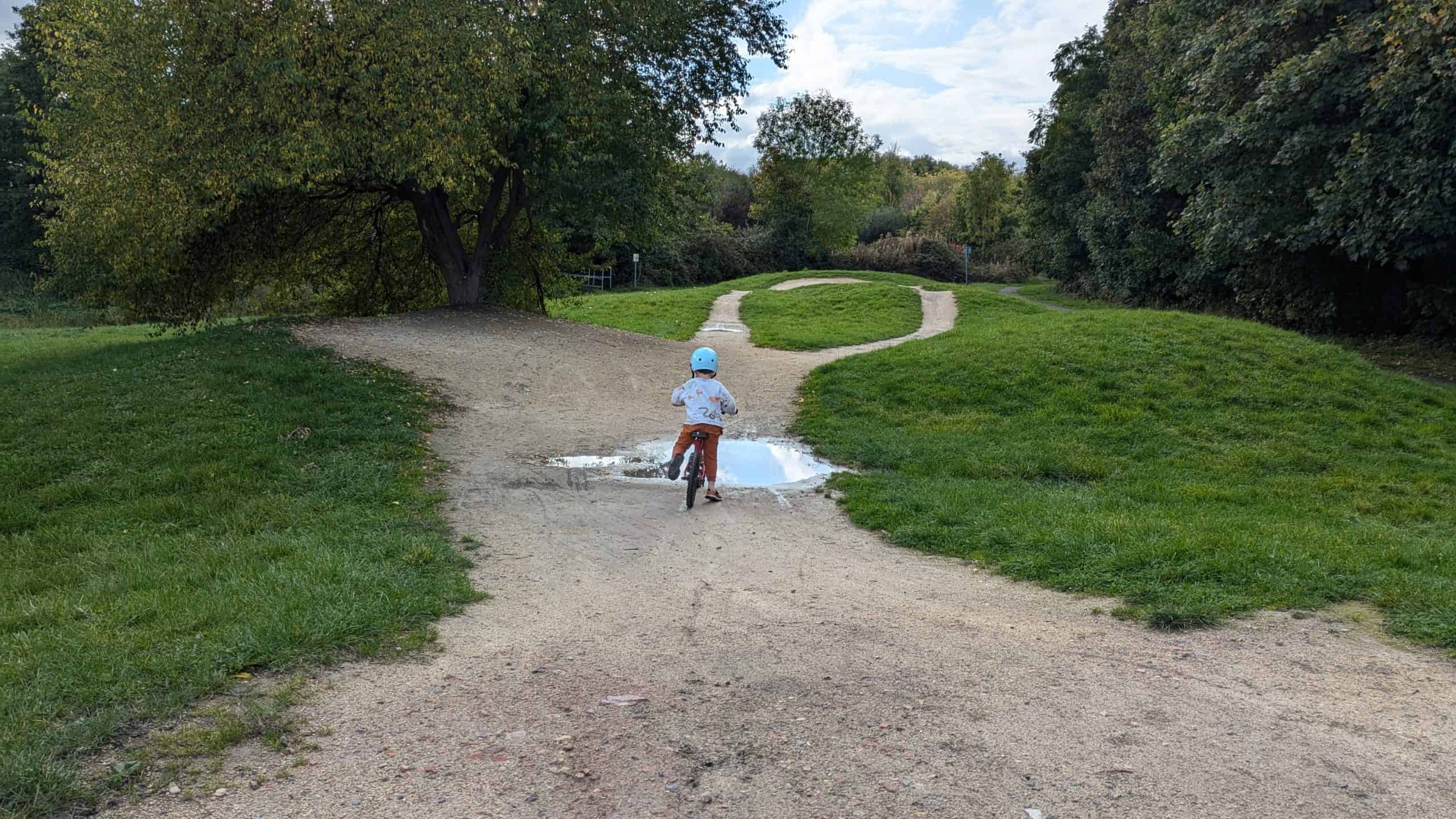Learning to ride a bike is a milestone in a child’s life, not just for the physical benefits but also for the confidence and independence it fosters. The question of when a child should learn to ride a bike really should be as EARLY as possible. Of course, we are biased here at Family Cycling 🙂
Our daughter was 4 years old when she was comfortable pedalling, and our son is of a similar age and can cycle, too (although he needs a little more persuasion).
But the question of when is the best age for a child to begin cycling, and how to support them through the process, is one that many parents face.
While the age range can vary depending on the child, evidence suggests that starting early can be immensely beneficial.
In this article, we explore the optimal ages, key stages, and the importance of early cycling, with insights from the UK and other successful countries, including the Netherlands and the Nordic region.
Why there’s no such thing as the right age
In the UK, children often start learning to ride a bike at ages 4 to 6. However, countries like the Netherlands and Scandinavian nations such as Denmark and Sweden have long embraced earlier introductions to cycling, often starting children as young as 2-3 years old on balance bikes.
Balance Bikes have become more prominent in the UK now, which is fantastic to see. However, we are still slow on the transition to cycling with fewer children than ever learning to ride before school.
If your child is showing signs of competence on the balance bike, has understood the basics of balancing and can move at speed and stop easily then it may be a good time to transition to a normal bike.
Why Start So Early?
There are several reasons why starting early can benefit a child:
- Physical and Cognitive Benefits: Learning to ride a bike is a whole-body experience. It develops coordination, strength, and motor skills, and also helps with focus and cognitive development.
- Building Healthy Habits: Early cycling promotes outdoor activity, helping children build lifelong exercise habits. It also keeps them active, reducing the risks associated with a sedentary lifestyle.
The earlier, the better. Imagine starting primary school and having a child who can competently cycle to school. It makes the whole morning routine far more enjoyable and rewarding.
From Balance Bike to Pedal Bike: The Stages of Transition
Stage 1: Introducing the Balance Bike (Ages 2-4)
Starting on a balance bike gives children a head start in their cycling journey by teaching them to balance without the distraction of pedalling. I would recommend getting them a balance bike as soon as they are competent walking. If your child has developed speech and understanding quickly then they can be coached from an earlier age. The trickiest part of teaching a child how to ride a bike is understanding.
Balance bikes are brilliant though and are a simple yet effective way for young children to develop the core skills needed for cycling.
Steps for Transitioning from a Balance Bike:
- Choose the Right Bike: Balance bikes come in different sizes and designs, so it’s important to choose one that fits the child comfortably. They should be able to sit with their feet flat on the ground and have a slight bend in their knee when seated.
- Focus on Balance: Allow your child time to get used to balancing and scooting along. Ensure they practice starting and stopping by themselves.
- Encourage Independence: As your child builds confidence, encourage them to ride longer distances and steer with more control. This can be tough as a parent and there may be a couple of accidents but ultimately you need to give them the freedom and autonomy to make mistakes.
Stage 2: Transitioning to a Pedal Bike (Ages 4-6)
Once a child is comfortable balancing on a balance bike, transitioning to a pedal bike should be relatively smooth. We chose to skip stabilisers as they feel restrictive to the actual cycling motion and we chose to move from a balance bike to a pedal bike, a method popular in countries with high cycling participation rates, such as the Netherlands.
Steps for Transitioning to a Pedal Bike:
- Remove the Pedals (if needed): One method that helps is to start with a normal bike without pedals, just like the transition from the balance bike. This was a method we chose with Barney however Matilda went straight from balance bike to pedal bike. It was within the covid months of 2020 so she had clear roads to practice on.
This way, the child can practice using the pedals when they’re ready, without losing their balancing skills. - Introduce Pedals Gradually: Once they’re comfortable balancing, add the pedals and encourage the child to practice the same motion as they would on the balance bike, and then gradually use their feet to push and pedal.
- Practice in a Safe, Open Space: Choose a flat, open space where they can practice without obstacles or distractions. This can be difficult in the UK and it usually involves driving somewhere which is designated ‘traffic-free’ (the irony is not lost on me here.
Focus on pedal coordination and balance before encouraging the child to ride longer distances. This can take a number of months. Our daughter Matilda was a fast learner however our Son Barney has taken a little more time. This leads us to the next point. - Patience and Encouragement: Like any new skill, learning to pedal takes time. Celebrate small victories to keep motivation high.
Stage 3: Riding Independently (Ages 5-7)
By this age, most children are ready to ride independently. It’s important to support their learning by ensuring they have a properly fitting bike and helmet.
This phase is about refining their skills and gaining confidence in their ability to navigate different terrains, such as inclines and turns.
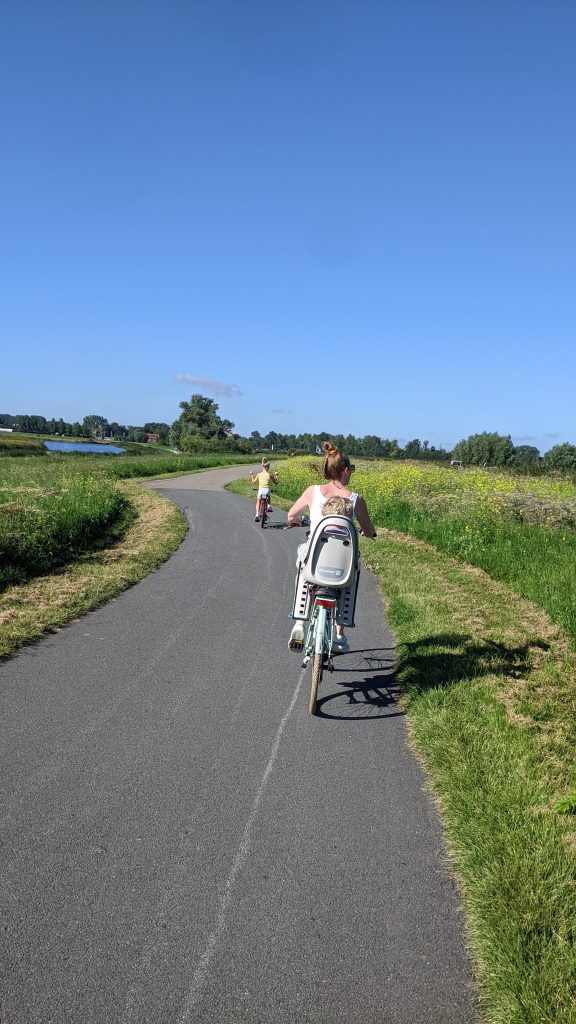
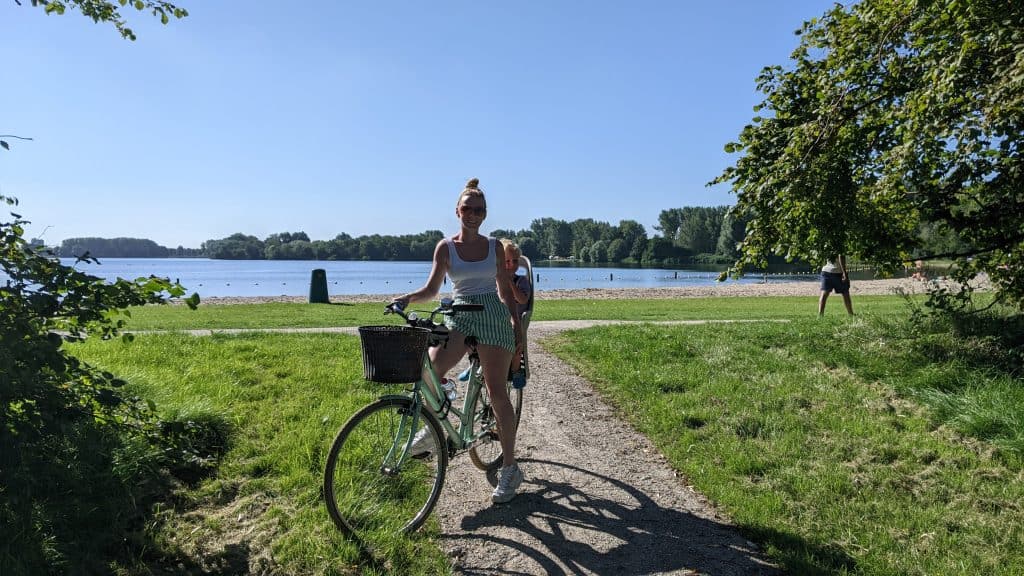
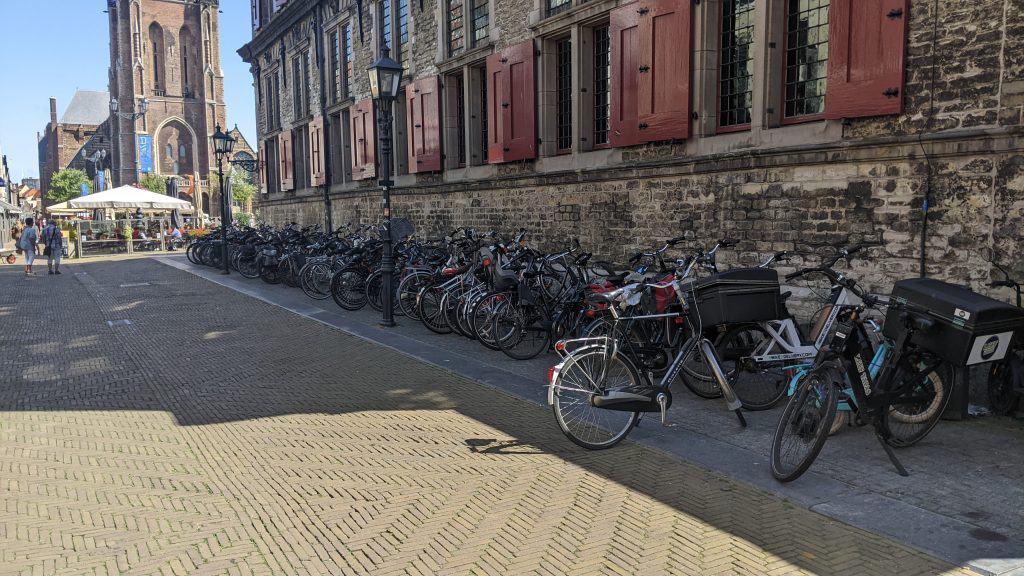
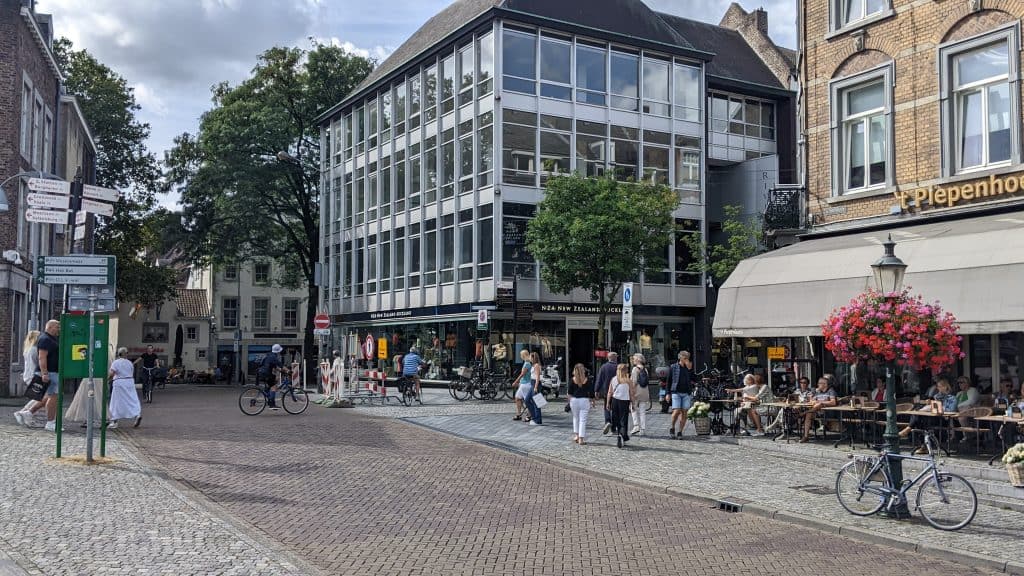
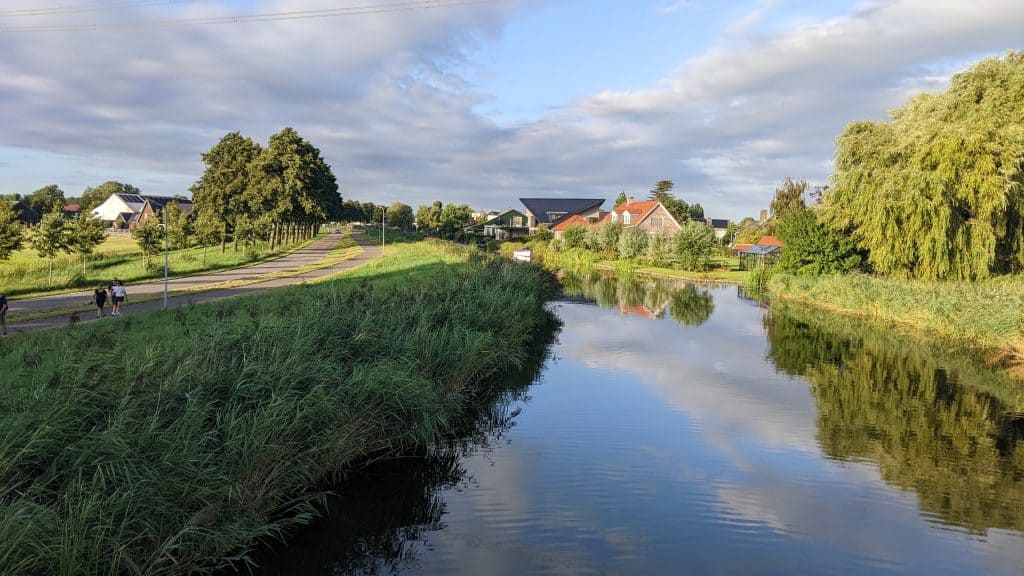
The Global Perspective: Why Early Cycling is Important in the UK and Beyond
The Netherlands & Nordic Countries:
In cycling-centric countries such as the Netherlands, Denmark, and Sweden, cycling is embedded into daily life. Children often begin using balance bikes at age 2, and many will ride independently by age 5 or 6. These countries offer practical lessons on how early cycling can create a healthier, more sustainable lifestyle.
Cycling is seen as both a form of transportation and recreation, contributing to overall well-being, independence, and social cohesion. All three countries also have above average cycling infrastructure which helps considerably with cycling with children.
Why the Netherlands Is a Model:
The Netherlands is famous for its biking culture, where cycling is deeply ingrained in daily life. According to the Dutch Cycling Embassy, 95% of Dutch children ride bikes to school (source: Dutch Cycling Embassy, 2023).
This is made possible by the country’s bike-friendly infrastructure and early cycling education. Children are often taught to cycle starting as young as age 2, using balance bikes before transitioning to pedal bikes.
As a result, the Netherlands consistently ranks as one of the most bike-friendly countries in the world, with children riding bikes daily as part of their normal routine (source: European Cycling Federation, 2021).
We’ve spent a couple of summers in the Netherlands and found the infrastructure outstanding even in suburban areas outside of the major cities. We wrote an extensive article on Cycling in the UK vs the Netherlands and how it compares. Although it’s far easier to safely cycle in the Netherlands due to attitude and infrastructure it’s certainly possible here in the UK.
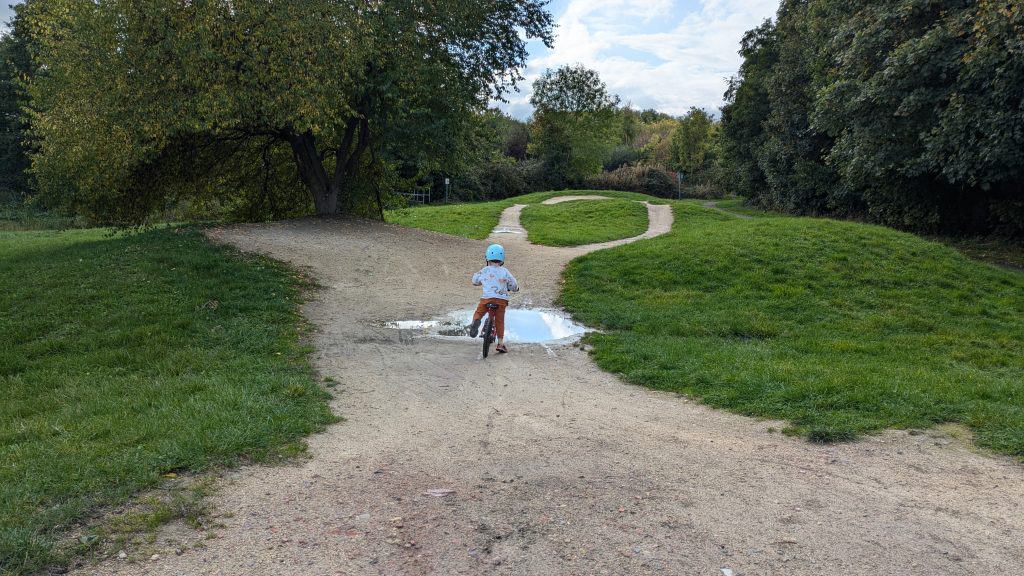
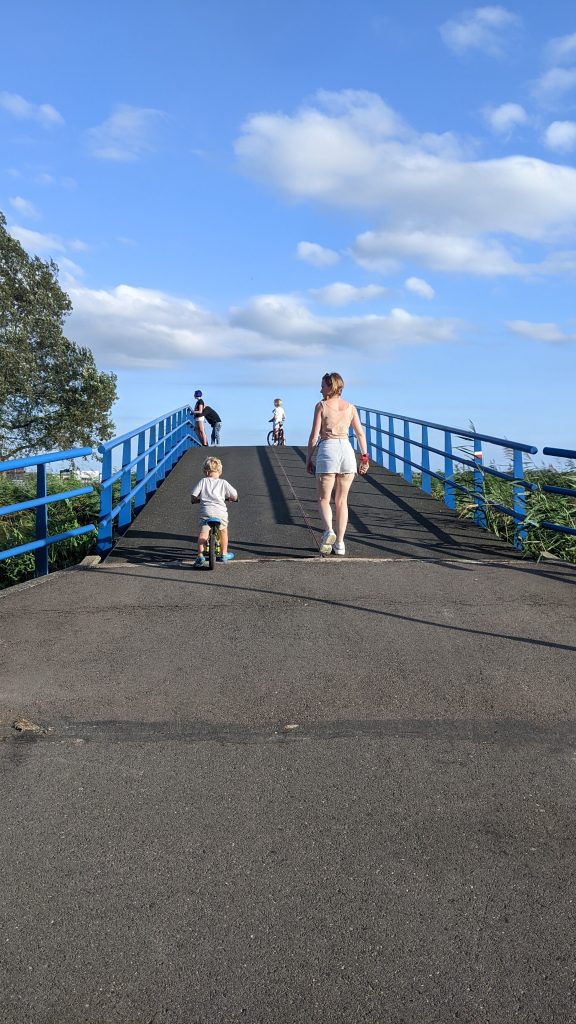
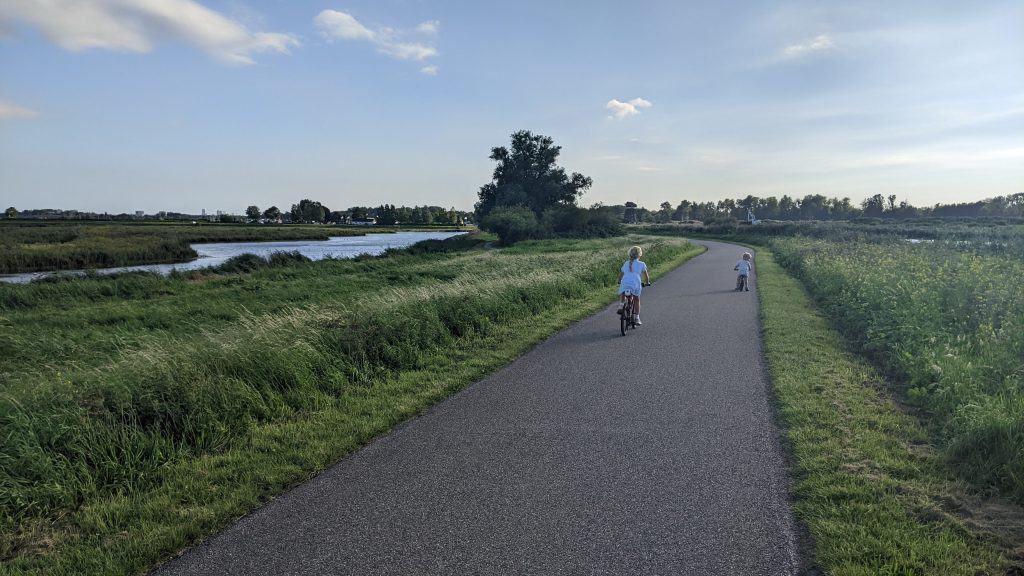
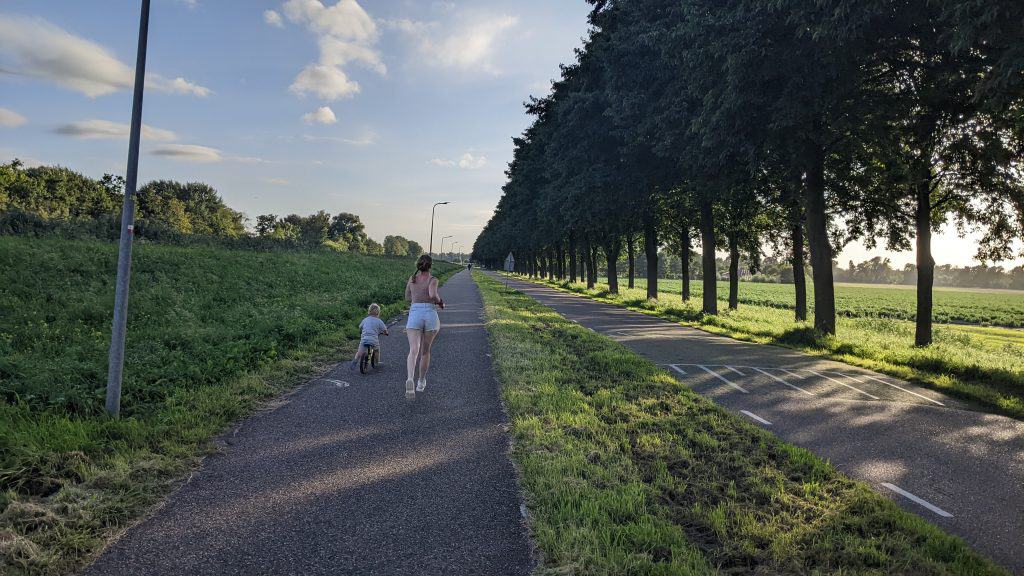
Why Early Cycling is Encouraged in Nordic Countries
Scandinavian countries, including Denmark and Sweden, also emphasize early cycling education. In Denmark, for example, cycling is introduced to children as young as age 2 through the use of balance bikes, and by age 6, many children are able to navigate their local streets confidently (source: Copenhagenize Design Company, 2020).
This early exposure to cycling helps children develop essential skills such as balance, coordination, and road safety. The importance of cycling as part of a child’s development is supported by policies that encourage outdoor activities, physical education, and green transportation. For two countries with harsh winter climates it’s a testament to the policymakers who managed to ingrain cycling into the DNA of both countries.
Benefits of Early Cycling:
Beyond the fun factor of cycling, there are also many other benefits which are equally as important. Teaching your child how to ride a bike and doing so from an early age can help with development milestones and growth as humans.
We’ve tried to document a few below which may be of benefit to parents. We are huge advocates and believers of setting the right environment for kids to be competent athletes and this comes from consistency and focus.
- Motor Skill Development: Starting early improves motor coordination, making it easier for children to pick up other physical activities like running, swimming, or gymnastics. Research from The British Journal of Sports Medicine suggests that early physical activity, such as cycling, can positively impact a child’s motor skills development (source: British Journal of Sports Medicine, 2018).
- Mental and Emotional Health: Cycling helps build resilience, boosts confidence, and enhances mental well-being. Studies have shown that physical activities like cycling promote better mental health outcomes in children by reducing stress and improving focus (source: Pediatrics, 2019).
- Independence and Responsibility: Early cycling nurtures a sense of independence. Children gain the confidence to explore their surroundings safely, helping them develop a sense of responsibility and autonomy. According to research by the Youth Sport Trust (2020), cycling has been shown to foster independence and improve self-esteem among children.
- Sustainability and Environmental Benefits: Cycling from an early age encourages sustainable transport choices, which can have long-term environmental benefits as children grow older. A study by Sustrans in the UK found that promoting cycling as an early form of transport can reduce car dependency and contribute to a more sustainable future (source: Sustrans, 2021).
If we can get more people choosing to cycle or walk to school it will make the overall experience far better for all. Less pollution, less congestion, happier and competent children.
Conclusion:
The transition from a balance bike to a pedal bike doesn’t have to be stressful for parents or children. By starting early, offering plenty of practice, and fostering a sense of independence, children can develop valuable skills that will serve them throughout their lives.
There’s an attitude which has developed in society that with cars we no longer need bikes for transportation and as such fewer children are riding day to day. Furthermore, parents are worried about road safety which although a concern shouldn’t be a reason not to ride a bike. There are traffic-free routes which can be utilised initially with a build-up to road use as and when they get older.
While age is an important factor, it’s more about readiness and confidence than a specific milestone. By looking at successful countries like the Netherlands and Nordic regions, we can understand the positive impacts of early cycling on children’s physical, mental, and emotional development.
Our goal here at Family Cycling is to introduce more and more people to the benefits of riding a bike. As a tool for building independence and resilience. It’s never too early to introduce your child to the joys of cycling and set them on the path to a healthier, happier life.
Sources:
- Dutch Cycling Embassy. “Cycling in the Netherlands.” Dutch Cycling Embassy
- European Cycling Federation, “Cycling in the European Union,” 2021.
- Copenhagenize Design Company, “Copenhagen and Early Cycling Education,” 2020.
- British Journal of Sports Medicine, “The Impact of Early Physical Activity on Child Development,” 2018.
- Pediatrics, “Mental Health Benefits of Physical Activity in Children,” 2019.
- Youth Sport Trust, “Cycling and Child Development,” 2020.
- Sustrans, “Promoting Cycling for Sustainable Transport in the UK,” 2021.
Last Updated on February 10, 2025 by Ryan
Hello. I am Ryan and along with my wife Beth and our two children Matilda and Barney, we love all things cycling and exploring. We spend our weekends exploring fun places to cycle and discover and wanted to help other people do the same too. There’s no better way to travel than via bike and it’s an amazing activity for the whole family to enjoy.
